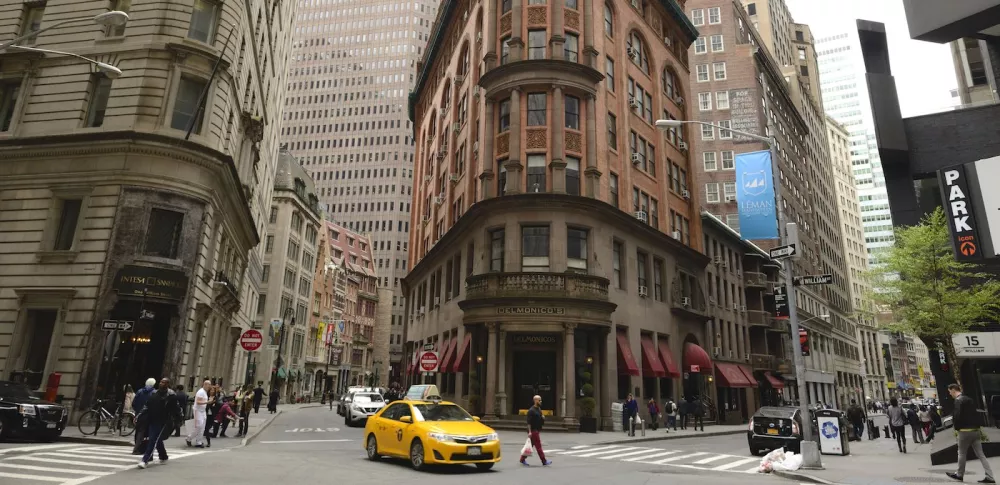Yale history professor and author Paul Freedman has been entrenched in American food and cuisine for decades. In January 2021, he joined the Institute of Culinary Education for a live stream featuring the importance of restaurants in society and the influential eateries that shaped the restaurant industry as featured in his book, “Ten Restaurants That Changed America.”
“Since the pandemic, many people have taught themselves how to cook or rediscovered how to cook, taken their cookbooks out of storage and become more self-reliant,” Professor Freedman told students. “This has led to predictions that restaurants would close, but I don’t think people will give up restaurants cheerfully.”

As he explained, restaurants have been destinations for gastronomic curiosity as well as settings for sociability.
“It’s important to understand what restaurants are for, why they are important to the public and how they evolved in the past,” Professor Freedman said. Restaurants are where romance blossoms, where business deals are done, where families celebrate and where friendships are deepened. “The future of restaurants after the pandemic is related to their social function and how people respond to the experiences restaurants provide.”
According to Professor Freedman, restaurants began in 18th-century Paris. The concept offered choice, in the form of menus, hours and location, which was not available from the inns and taverns that preceded. “Restaurants allow you to come in as a party of three, or whatever, whereas before restaurants you ate at a common table,” he explained.
Now the significance of restaurants is evident. “You can see the importance of restaurants in the amount of money spent,” Professor Freedman points out. “In the U.S. in 2015, people spent more money in restaurants than dining at home. Restaurants serve a social function. They are the venue of choice somewhere between the anonymity of the city and the intimacy of family.”
Professor Freedman presented why where and what we eat today is a result of innovation from the following 10 restaurants:
Delmonico’s
Delmonico’s was a bastion of fine-dining in America for nearly a century. Located in the financial hub of Manhattan, Delmonico’s started as a pastry shop in 1827 and evolved into a fine French restaurant with an extensive menu that often featured as many as 200 items.
Antoine’s
In the French Quarter of New Orleans, Antoine’s was also a French restaurant. “Its menu was in French until about 20 years ago,” Professor Freedman said. “They didn’t translate it as they wanted people to ask the waiter to explain it.”
Schrafft’s
Schrafft’s was one of the first restaurants in the United States to market to women with fare targeted to the demographic: light food and fancy desserts. “It was the first place where women could go where they could be well-treated and not regarded with suspicions or questioned what they were doing without male escorts,” Professor Freedman explained. Later, it became representative of a middle-class dining establishment and switched its marketing strategy to include a men’s section with zebra print design.
Howard Johnson’s
A roadside chain, Howard Johnson’s was a familiarity for travelers. “It was middle class, bland, safe-looking and the ancestor of fast food,” Professor Freedman said. “They had a menu with lots of items, you sat down, they had waitresses... It was clean, friendly, but not encouraging guests to stay all day.”
The Mandarin
“Another pillar of middle-class dining was the so-called 'ethnic' restaurant,” Professor Freedman explained. While Chinese cuisine in the U.S. previously focused on things like chop suey, the Mandarin in San Francisco was one of the first restaurants to focus on elegance. “The Mandarin was influential in creating regional high-end dining."
Mama Leone’s
“Next to China, Italy has provided the most popular foreign cuisine,” Professor Freedman said. “Mama Leone’s served, at the height of its popularity and size, up to 3,000 people a day — that’s influential.”
Sylvia’s
Sylvia Woods’ restaurant exemplifies African-American cuisine that originated in the South. “African-American food has been so influential that it is really ultimately futile to try to divide American food from African-American food,” Professor Freedman explained. “This is most obvious in Southern food where fried chicken, barbecue, rice and greens have been eaten by Black people and white people.”
Le Pavillon
Le Pavillon was originally the restaurant of the French pavilion at the 1939-40 New York World’s Fair. “The fall of France to the Nazi’s in June of 1940, stranded the restaurant staff and the owner then created a restaurant in New York in 1941 that was wildly successful and would define elegant cuisine for the next 25 years,” said Professor Freedman.
The Four Seasons
Established in 1959, The Four Seasons with its famous Pool Room, was the setting for power lunches in New York’s midtown. “A monument of modern architecture, it was elegant the way Pavillon was, but it was deliberately not French,” explained Professor Freedman. “It pioneered ideas like foraged mushrooms or seasonal greens.”
Chez Panisse
Alice Waters' Berkeley, California, restaurant established a movement that has impacted the way we currently eat, with a focus on farm-to-table. The menu highlighted freshly harvested, natural food and the atmosphere, like the cuisine, is unadulterated and unfussy.
Learn what makes an impactful eatery in Restaurant & Culinary Management.




